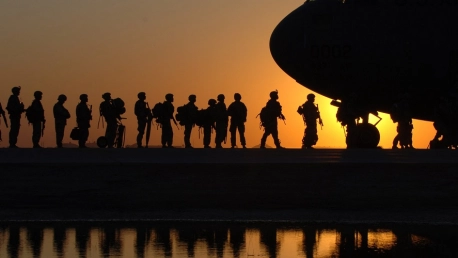Not long after President Joe Biden attended two summits in Europe, a new issue appeared on the world stage. Tensions started to rise in Ukraine after both the Eastern European country and the U.S. expressed concerns at what seemed to be an unusual build-up of Russian troops at the Ukrainian border. Although President Biden later discussed the matter with Russian President Vladimir Putin, warning him that the U.S. would take substantial measures in the event of an invasion. The Russian President stated that he insists on receiving guarantees from Western leaders that NATO will not expand to Ukraine.
According to The Washington Post, it was U.S. intelligence that discovered Russia’s apparent preparations for a multi-front offensive in early 2022, an offensive that might involve as many as 175,000 troops. Although Russia recently deployed new troops near the Ukrainian border, prompting Western concerns, the same country almost simultaneously asked the U.S. and the U.K. to guarantee that NATO will not expand eastward, nor will the West deploy weapons threatening Russia in neighboring countries, including Ukraine. While the Russia-Ukraine conflict persisted since 2014, when the Russia annexed the Crimean Peninsula, this new crisis has provoked fears of a renewed war on European soil.
Is Russia still a superpower?
Back in 2014, former President Barack Obama said Russia is merely a “regional power” that threatens its neighbors not because it is a strong nation to be reckoned with, but rather because it has long lost its status as a superpower. Russian President Vladimir Putin might have felt truly humiliated by the statement, as even then he seemed to yearn for the Cold War status quo where both Russia and the U.S. dominated the world. It remains to be seen if these assessments are true and if they will continue to apply to current and future crises.
While Russia may hope to expand its sphere of influence in the region and rise again as one of the world’s superpowers, it’s countries like the U.S. and China that seem to be ruling the world for now. Despite the Russian narrative, the largest country in the world has little hope to equal America or China from a military perspective, and the comparison weakens from an economic perspective. However, the fact that Russia is not, at least for the time being, reemerging as a superpower does not make the country any less dangerous. In fact, it might be precisely Russia’s dream of superpower status that makes a crisis like this even more dangerous.
How to reduce tensions
In an attempt to reduce tensions and ease the dispute between Russia and Ukraine, President Biden decided to talk to President Putin via video call. Although the conversation included numerous issues on the U.S.-Russia agenda, Russia’s deployment of forces near the Ukrainian border was the main subject of the video conference. President Biden later said that he informed the Russian President that both U.S. and EU partners will respond with strong economic and other measures in the event of a military escalation. However, the President also urged Vladimir Putin to find solutions to de-escalate the crisis and return to diplomacy.
The video call with the Russian President was only the first among many, as President Biden also talked with President Volodymyr Zelenskyy of Ukraine. President Biden maintained the statement made to Vladimir Putin, that both the U.S. and Allied countries will respond with important economic and other measures in the event of a new military intervention in Ukraine. Furthermore, he assured President Volodymyr Zelenskyy of America’s firm commitment to Ukraine’s sovereignty and territorial integrity. Moreover, while Secretary Antony Blinken also talked with NATO Secretary General Stoltenberg, President Biden continued to discuss the matter with European Allies, including the Bucharest Nine, the U.S.’s group of eastern flank allies.
More than meets the eye
While diplomacy is the only way of truly resolving this conflict, it is worth noting that preparations have been made to provide a response if Russia further invades Ukraine. The U.S. is likely to react not only with strong economic measures, but also by providing extra defensive material to Ukraine and by securing NATO Allies on the eastern flank. According to a statement issued by a senior administration official, U.S.’s European allies are also likely to follow suit. In fact, items from a $60 million security assistance package, including weapons, were recently delivered to Ukraine, after the assistance package was previously approved by President Biden in September.
It remains to be seen if Moscow can give up on expanding its regional sphere of influence by threatening neighboring countries and ultimately decide to follow the diplomatic way of resolving conflicts already paved by other superpowers. For now, worries about a new crisis starting in Ukraine in early 2022 seem to be rising. A State Department official announces “more and more convergence” between the U.S. and allies on the key measures that would be taken if Russia ultimately decides to invade Ukraine. And, while severe economic consequences against Russia are certain, defensive military support for both Ukraine and other Eastern European countries is also likely.









